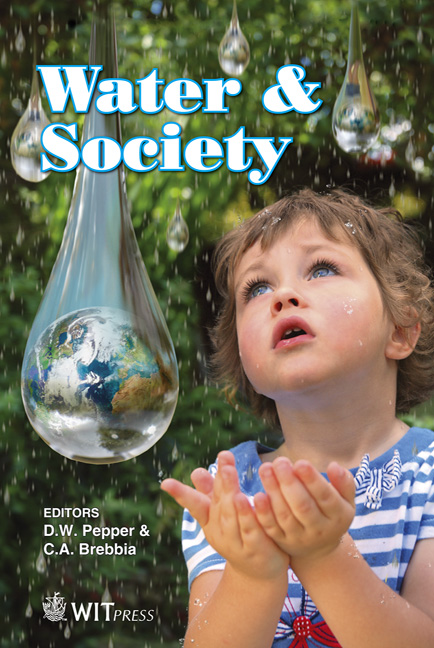Assessment Of Water Logging And Salinity Problems In South Africa: An Overview Of Vaal Harts Irrigation Scheme
Price
Free (open access)
Transaction
Volume
153
Pages
8
Page Range
477 - 484
Published
2011
Size
3,125 kb
Paper DOI
10.2495/WS110421
Copyright
WIT Press
Author(s)
O. I. Ojo, G. M. Ochieng & F. O. A. Otieno
Abstract
Soil salinity and water logging are twin critical environmental problems in many countries around the world especially the arid and semi-arid countries like South Africa. These problems have a great impact on soil fertility which in turns has a great effect on soil productivity. Thus, this paper reviews water logging and salinity as irrigation problems in South Africa with emphasis on Vaal harts Irrigation scheme (VIS). An estimated 0.62% of 776,131 ha of South Africa soils were discovered to be strongly saline according to literature. Also, an estimated 13-18% of the area under regular irrigation appears to be affected by water logging and salinization in VIS. It is situated between the Vaal and the Harts Rivers is approximately in the centre of the Republic of South Africa and also the largest irrigation scheme in the country with about 35,000 ha of land served as the case study for the assessment. The most frequently used methods to assess, monitor and quantify water and salinity problems are by means of soil surveys, questionnaires and laboratory analyses. These traditional data collection methods are neither enough for the assessing these important environmental issues nor accurate for soil studies. The use of modern techniques such as aerial photography, GIS and remote sensing (RS) are on the increase. Remote sensing and satellite image data are used to overcome most of these limitations with a need to best find the calibration between the data and real field situations. Presently, research is in progress on the use of RS to investigate these problems in VIS. Land sat data and weather
Keywords
irrigation, salinity, water logging, Vaal harts, agriculture





